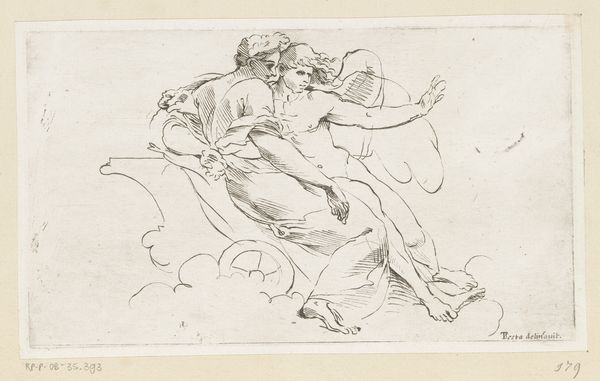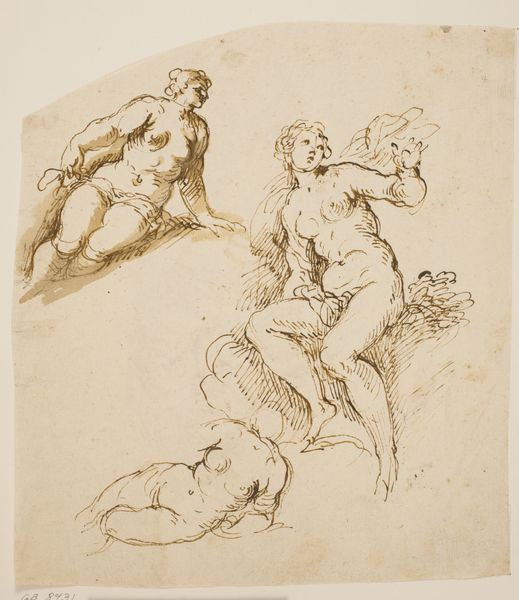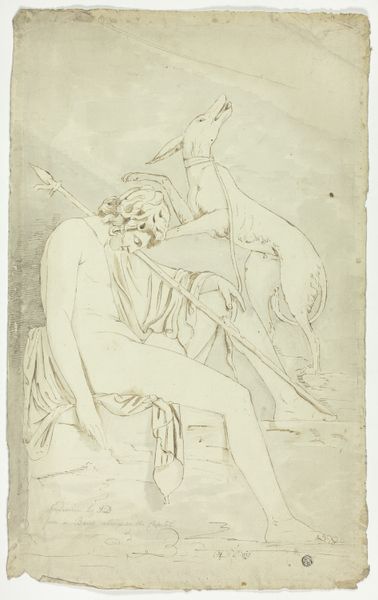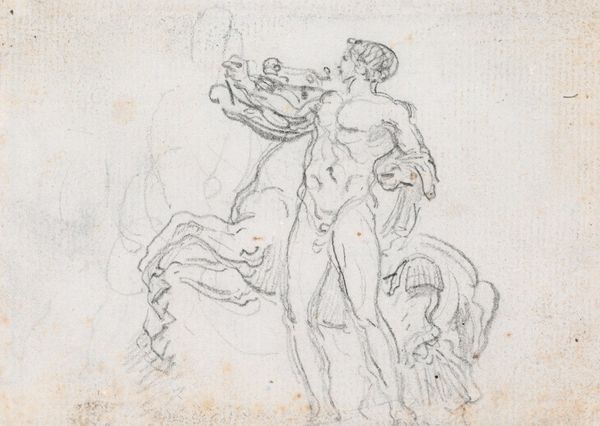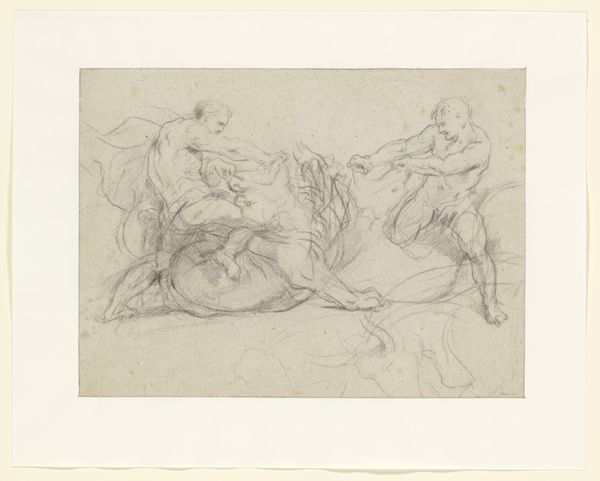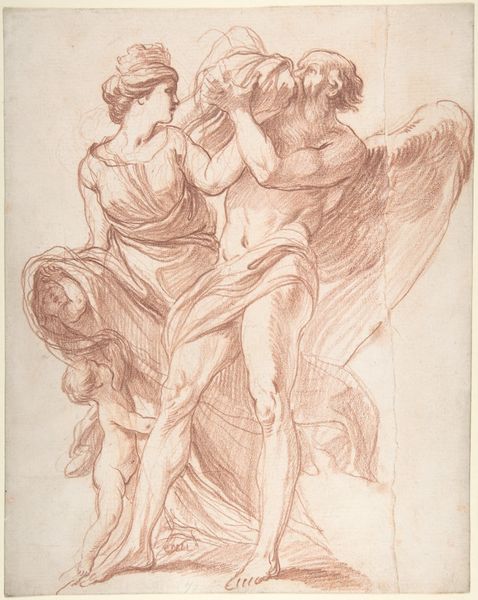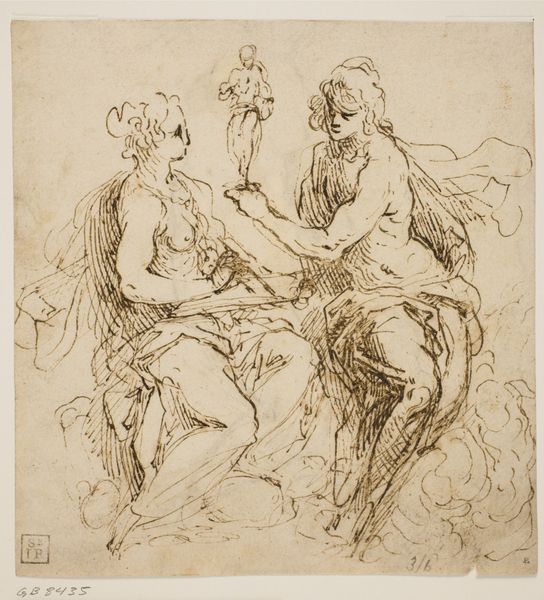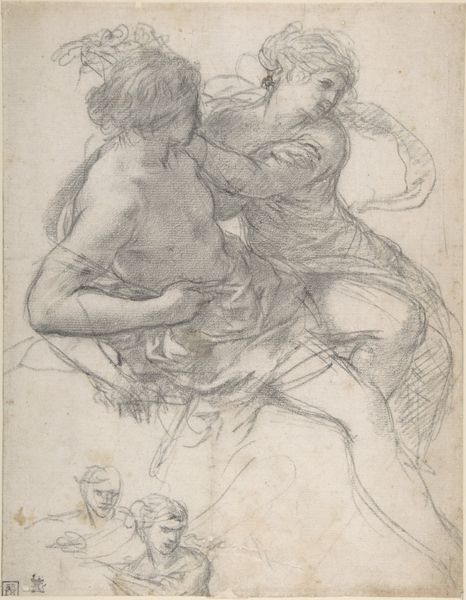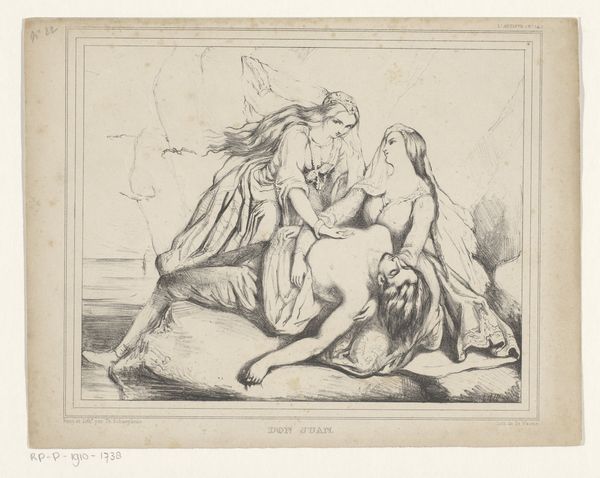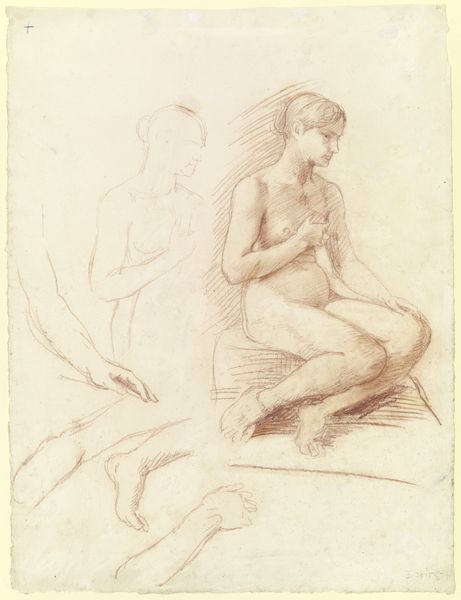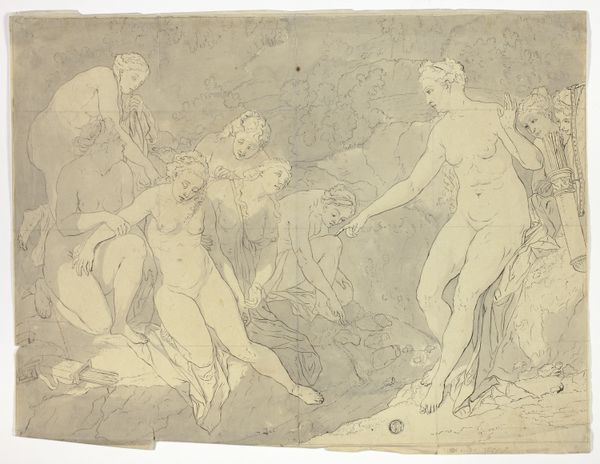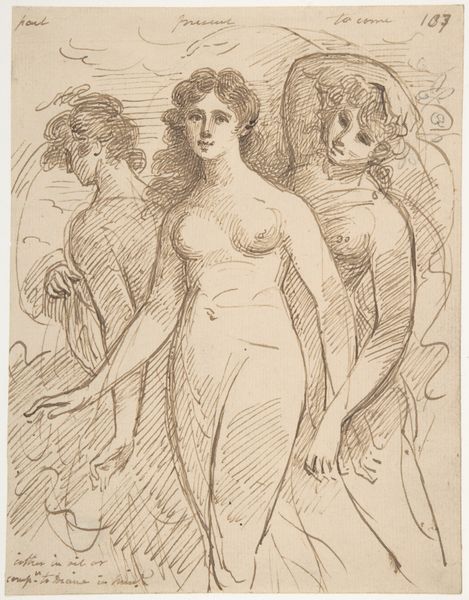
Dimensions: height 339 mm, width 250 mm
Copyright: Rijks Museum: Open Domain
Curator: Immediately, I’m struck by the delicacy of the pencil work, the sheer ethereal quality. It's a dream, a whispered secret on paper. Editor: Indeed. What we're looking at is a pencil drawing by Nicolaas van der Waay, completed in 1884, entitled "Drie Gratiën," or "Three Graces." Curator: Three Graces, classic subject, classically rendered! Look at the draping—feels like watered silk cascading. It seems he revels in representing fabric and the fall of light. Editor: The materiality is intriguing. He’s manipulating graphite, an industrial material, to portray ideals of feminine beauty—the historical and cultural weight of classical antiquity versus the ready availability of mass-produced tools. What statement might that suggest? Curator: Oh, it's like a reverie, isn't it? That longing glance toward the ancient world, viewed through the lens of burgeoning industrialization. These aren't laborers rendered in pencil; they are visions, softened and romanticized. Even the technique—pencil, soft, easily smudged—lends itself to a romantic interpretation. Editor: And within the context of academic art, it could also signify an emphasis on draughtsmanship, on the value of preparatory sketches in creating grander history paintings—an investment in refining form and line. Curator: So the labor isn't physical, exactly. It’s invested in study, mimicry, perhaps even reverence for the artistic lineage he seeks to emulate. Fascinating tension. But, truly, they also have an undeniable sweetness. It's a gentle, tender gaze. Editor: Ultimately, I think what stands out here is Van der Waay’s mastery of a humble material. The simple pencil serves to amplify these allegorical, yet deeply human, forms. Curator: Absolutely. It’s more than a sketch, it's an assertion of beauty found in simple making.
Comments
No comments
Be the first to comment and join the conversation on the ultimate creative platform.
